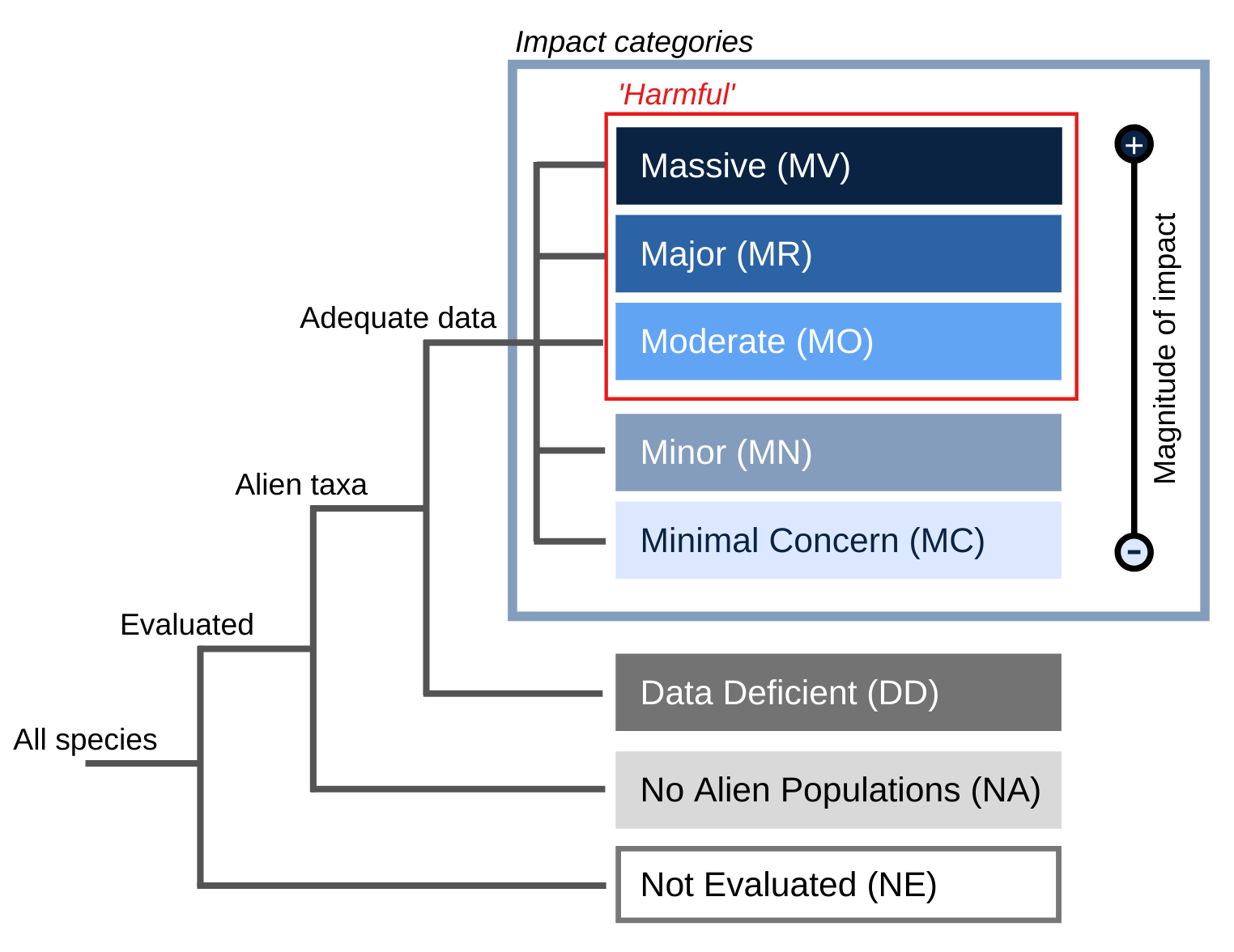- General
- Distribution
- Impact
- Management
- Bibliography
- Contact


A single plant may cover over 25 square metres within a few months, and release as many as 40,000 viable seeds every year. In some locations flowering and seed production are during short days only.
Principal source: Pacific Island Ecosystems at Risk (PIER), 2003. Mikania micrantha
Compiler: IUCN/SSC Invasive Species Specialist Group (ISSG)
Review:
Publication date: 2005-01-24
Recommended citation: Global Invasive Species Database (2025) Species profile: Mikania micrantha. Downloaded from http://www.iucngisd.org/gisd/species.php?sc=42 on 18-10-2025.
\r\nM. micrantha damages or kills other plants by cutting out the light and smothering them. In this respect it is especially damaging in young plantations and nurseries. It also competes for water and nutrients, but perhaps even more importantly, it is believed that the plant releases substances that inhibit the growth of other plants.\r\n
\r\nM. micrantha is one of the three worst weeds of tea in India and Indonesia and of rubber in Sri Lanka and Malaysia. In Samoa, incursions of M. micrantha have caused the abandonment of coconut plantations, and the weed has been reported to kill large breadfruit trees. It also causes serious problems in oil palm, banana, cacao and forestry crops, and in pastures. While it does not grow well in rice paddies, it can encroach from the edges to smother the crop.\r\n
\r\n(Northern Territory Department of Business, Industry and Resource Development)
\r\nBiological: Liothrips mikaniae was introduced into Solomon Islands in 1988, but failed to establish (Swarbrick, 1997). \"A number of very promising (and probably specific) natural enemies are known in Central and South America… Of these a thrips, L. mikaniae appears to be specific and to have considerable potential as a biological control organism. A bug, Teleonemia sp., several beetles and an eriophyid mite, Acalitus sp. also warrant serious consideration. A number of other natural enemies of little known specificity also attack M. micrantha\" (Waterhouse and Norris, 1987). Fungal pathogens have also been investigated in India as a potential biological control method (Swarbrick, 1997 in PIER, 2003).\r\n
\r\nOceania: At two regional technical meetings on plant protection and biosecurity in March 2002 and March 2004, 11 Pacifc Ocean \r\r\ncountries rated mile-a-minute (M. micrantha) and giant sensitive plant (Mimosa diplotricha) among their \r\r\ntop 10 worst weeds. \r\n
\r\nThe meetings further resolved for the Secretariat of the Pacifc Community (SPC) to assist Pacific Island Countries and \r\r\nTerritories to address major weeds of the region. As a result, SPC submitted a proposal to ACIAR to fund a major biocontrol \r\r\nproject against these two weeds. Both M. micrantha and M. diplotricha were rated in the “most important” \r\r\ncategory and have good prospects for biocontrol. Three countries, Papua New Guinea (PNG), Fiji and Samoa, which rated both weeds highly, were \r\r\nchosen to be initial implementers of the proposed project as they showed initial interest and had suitable facilities to \r\r\nimplement the activities. \r\n
\r\nA project development visit to Fiji, PNG and Samoa was carried out by Warea Orapa, Coordinator Weed Management, and Michael \r\r\nDay, an Entomologist based at Alan Fletcher Research Station, Queensland to establish linkages and discuss the proposed \r\r\nproject on the two weed pests. Because of conflicting views on Mikania in Samoa, Samoa has officially opted to wait till the \r\r\nresearch work is completed in Fiji and PNG. In addition, the proposed project may concentrate only on Mikania biocontrol \r\r\nsince field populations of the psyllid Heteropsylla spinulosa, released in these countries under the GTZ Biocontrol \r\r\nProgramme in Fiji and Samoa in the mid-1990s and independently released in PNG (by Ramu Sugar in 1992), are established.\r\n
\r\nM. micrantha in PNG has long been regarded as a problem weed, especially in large plantation areas as well as \r\r\nsmallholder farms on New Britain Island and several other areas. Support for a biocontrol project has been aired since 2002 \r\r\nby the National Agricultural Research Institute (NARI) and the Cocoa and Coconut Institute. For more information contact \r\r\nWareaO@spc.int (Pacific Pest Info, No. 55, January 2005).


















